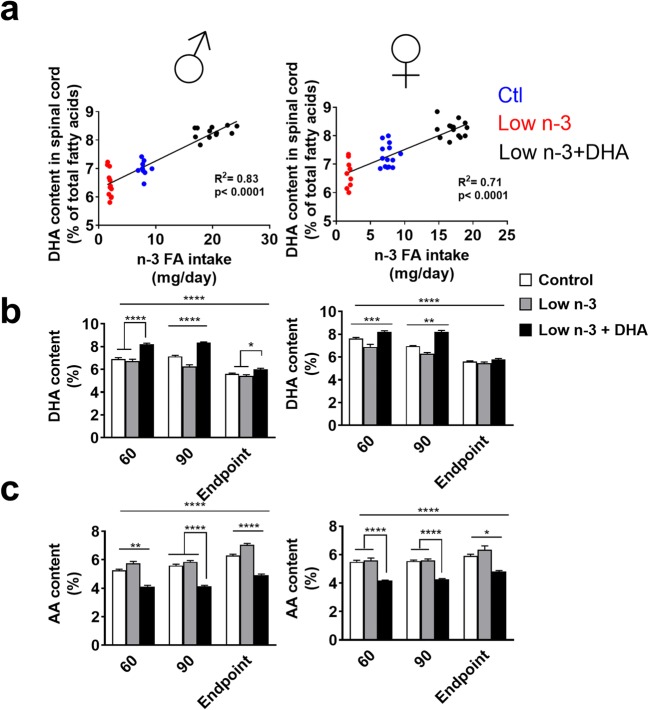Fig. 2.
Dietary DHA supplementation increases DHA contents and lowers AA concentrations in the lumbar spinal cords of G93A mice. (a) DHA content of the lumbar spinal cords correlates significantly (see inside the graph for Pearson correlation coefficients) with dietary intake of n-3 fatty acids in 90-day-old males (linear regression: p < 0.001; r2 = 0.58) and females (linear regression: p < 0.001; r2 = 0.24). Consequently, across different ages, males supplemented with DHA have higher DHA levels in LSC with similar results in females, with the exception of endpoint period (b). Similarly, AA is reduced in LSC in male mice under the DHA diet, as well as in females (c). Bars indicate mean values, whereas error bars represent S.E.M. Significant differences between dietary groups (*p < 0.05, **p < 0.01, ***p < 0.001) were evaluated by a Bonferroni post hoc analysis after 2-way ANOVA, accounting age and diet

